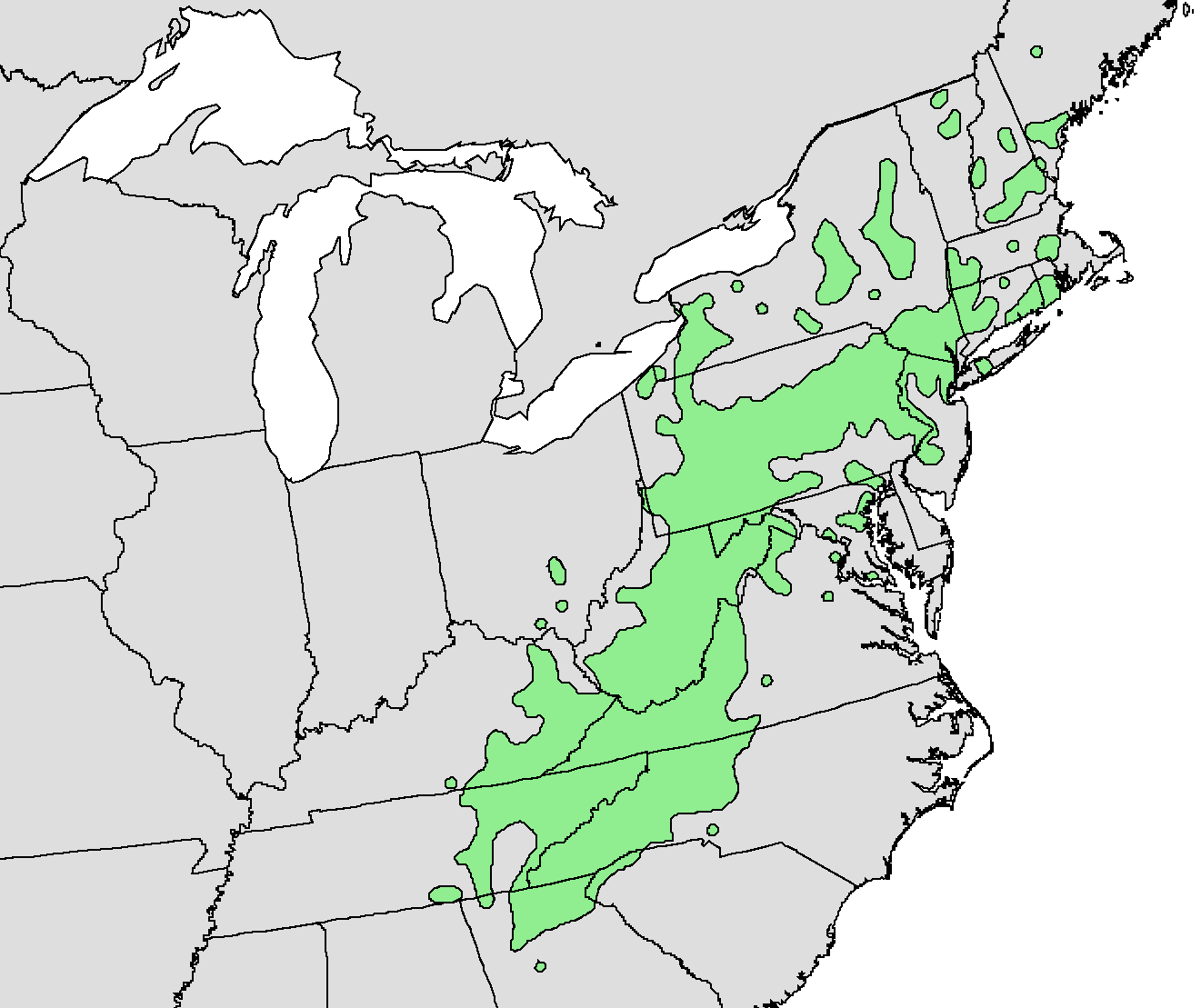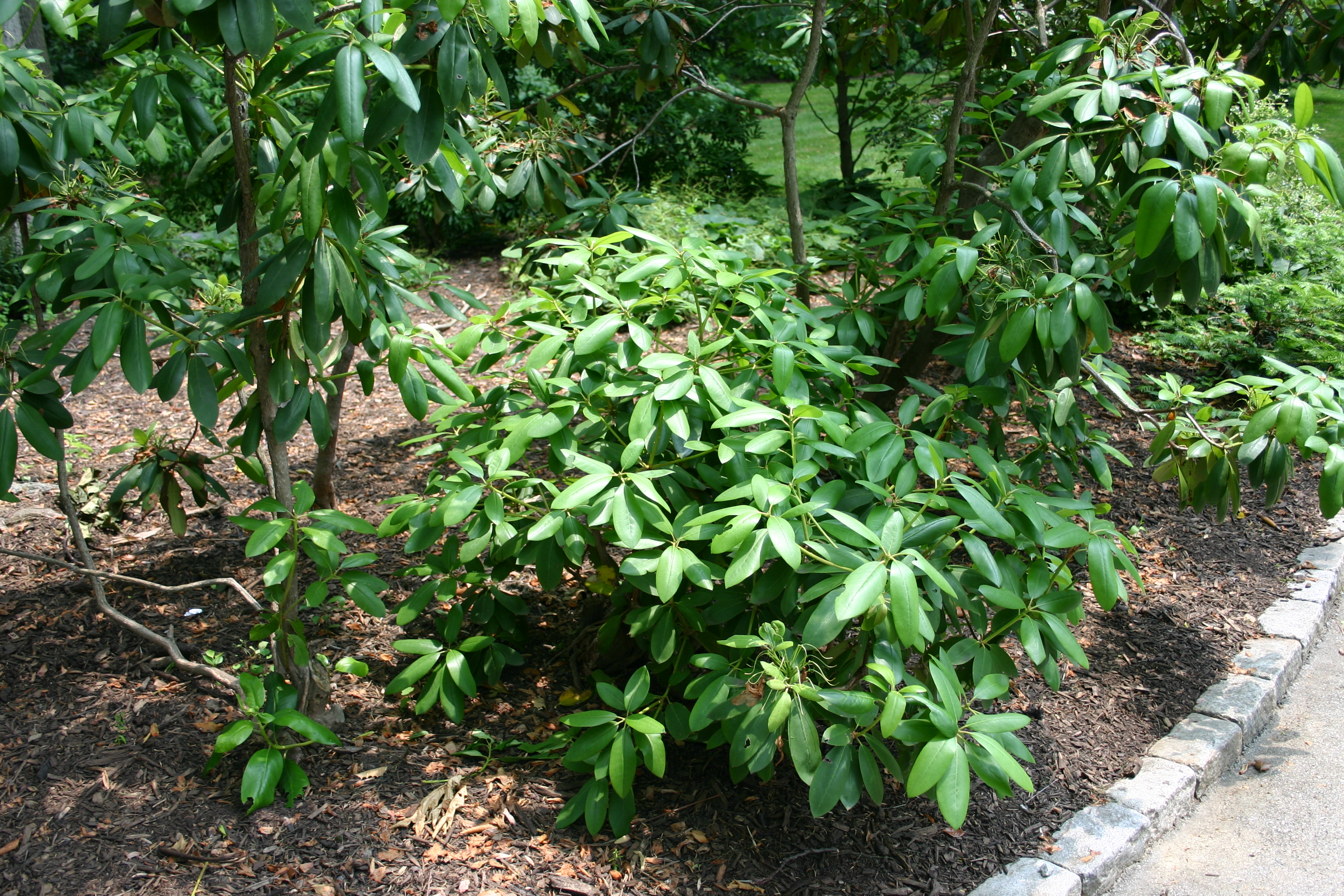Rhododendron maximum on:
[Wikipedia]
[Google]
[Amazon]
''Rhododendron maximum'' is a species of ''
File:Rhododendron maximum.jpg, Flower
File:American Rhododendron Leaves.jpg, Leaves
File:Rhododendron maxima Trunk Bark 2090px.jpg, Bark
 Rosebay rhododendron is the most frequently occurring and dominant species of ''Rhododendron'' in the southern Appalachian region, and occurs occasionally on mesic hill-slopes throughout the upper Piedmont Crescent of the Southeastern United States.
Rosebay rhododendron is the most frequently occurring and dominant species of ''Rhododendron'' in the southern Appalachian region, and occurs occasionally on mesic hill-slopes throughout the upper Piedmont Crescent of the Southeastern United States.
 Seeds from rosebay rhododendron are minute and it is estimated that approximately 11 million are contained in 1 kg. Commercial seed production is generally from cultivated hybrids. Seeds from wild sources are not commonly sold commercially. Rosebay rhododendron is a slow-growing shrub and has a very high sprout potential. If mechanical removal is attempted in the case of forest management, extremely high densities are attained by this species in a matter of a few years. Prescribed fire has also been used to control this species but with limited success.
Seeds from rosebay rhododendron are minute and it is estimated that approximately 11 million are contained in 1 kg. Commercial seed production is generally from cultivated hybrids. Seeds from wild sources are not commonly sold commercially. Rosebay rhododendron is a slow-growing shrub and has a very high sprout potential. If mechanical removal is attempted in the case of forest management, extremely high densities are attained by this species in a matter of a few years. Prescribed fire has also been used to control this species but with limited success.
USDA Plants Profile of ''Rhododendron maximum'' (great rhododendron)Interactive Distribution Map for ''Rhododendron maximum''Plants for a Future: ''Rhododendron maximum''
{{Authority control
Rhododendron
''Rhododendron'' (; : ''rhododendra'') is a very large genus of about 1,024 species of woody plants in the Ericaceae, heath family (Ericaceae). They can be either evergreen or deciduous. Most species are native to eastern Asia and the Himalayan ...
'' native to the Appalachians
The Appalachian Mountains, often called the Appalachians, are a mountain range in eastern to northeastern North America. The term "Appalachian" refers to several different regions associated with the mountain range, and its surrounding terrain ...
of eastern North America
North America is a continent in the Northern Hemisphere, Northern and Western Hemisphere, Western hemispheres. North America is bordered to the north by the Arctic Ocean, to the east by the Atlantic Ocean, to the southeast by South Ameri ...
, from Alabama
Alabama ( ) is a U.S. state, state in the Southeastern United States, Southeastern and Deep South, Deep Southern regions of the United States. It borders Tennessee to the north, Georgia (U.S. state), Georgia to the east, Florida and the Gu ...
north to coastal Nova Scotia
Nova Scotia is a Provinces and territories of Canada, province of Canada, located on its east coast. It is one of the three Maritime Canada, Maritime provinces and Population of Canada by province and territory, most populous province in Atlan ...
. Its common names include great laurel, great rhododendron, rosebay rhododendron, American rhododendron and big rhododendron.
Description
''Rhododendron maximum'' is anevergreen
In botany, an evergreen is a plant which has Leaf, foliage that remains green and functional throughout the year. This contrasts with deciduous plants, which lose their foliage completely during the winter or dry season. Consisting of many diffe ...
shrub
A shrub or bush is a small to medium-sized perennial woody plant. Unlike herbaceous plants, shrubs have persistent woody stems above the ground. Shrubs can be either deciduous or evergreen. They are distinguished from trees by their multiple ...
growing to , rarely , tall. The leaves
A leaf (: leaves) is a principal appendage of the stem of a vascular plant, usually borne laterally above ground and specialized for photosynthesis. Leaves are collectively called foliage, as in "autumn foliage", while the leaves, stem, ...
are long and broad. The flower
Flowers, also known as blooms and blossoms, are the reproductive structures of flowering plants ( angiosperms). Typically, they are structured in four circular levels, called whorls, around the end of a stalk. These whorls include: calyx, m ...
s are diameter, white, pink or pale purple, often with small greenish-yellow spots. The fruit
In botany, a fruit is the seed-bearing structure in flowering plants (angiosperms) that is formed from the ovary after flowering.
Fruits are the means by which angiosperms disseminate their seeds. Edible fruits in particular have long propaga ...
is a dry capsule long, containing numerous small seed
In botany, a seed is a plant structure containing an embryo and stored nutrients in a protective coat called a ''testa''. More generally, the term "seed" means anything that can be Sowing, sown, which may include seed and husk or tuber. Seeds ...
s. The leaves can be poisonous. Leaves are sclerophyllous, simple, alternate, and oblong (10 to 30 cm long, 5 to 8 cm wide). It retains its waxy, deep-green leaves for up to 8 years, but once shed are slow to decompose. It produces large, showy, white to purple flowers each June and July.
Distribution and habitat
 Rosebay rhododendron is the most frequently occurring and dominant species of ''Rhododendron'' in the southern Appalachian region, and occurs occasionally on mesic hill-slopes throughout the upper Piedmont Crescent of the Southeastern United States.
Rosebay rhododendron is the most frequently occurring and dominant species of ''Rhododendron'' in the southern Appalachian region, and occurs occasionally on mesic hill-slopes throughout the upper Piedmont Crescent of the Southeastern United States.
Ecology
Approximately 12,000 square miles in the southern Appalachians are occupied by this species where it dominates the understory. This species has historically been confined to riparian areas and other mesic sites but takes advantage of disturbed areas where it is present to advance onto sub-mesic sites. It prefers deep well-drained acid soils high in organic matter where it produces a thick, peat-like humus. It prefers low to medium light conditions for optimum carbon gain, and has a tremendous capacity for avoiding cavitation during freeze-thaw cycles. Where extensive overstory mortality has eliminated most of the overstory, this species forms a thick and continuous subcanopy known locally as 'laurel slicks' or 'laurel hells'. Rosebay rhododendron is an important structural and functional component of southern Appalachian forest ecosystems. What is not clear is whether or not we are in a period of advancement or retreat for this species. For example, on poorly drained sites on ridge or upper slope positions, large areas of rosebay rhododendron, particularly at the high elevations, have recently died out presumably due to the ''Phytophthora
''Phytophthora'' (from Greek (''phytón''), "plant" and (), "destruction"; "the plant-destroyer") is a genus of plant-damaging oomycetes (water molds), whose member species cause economic losses on crops worldwide, as well as environmental dam ...
'' fungus, or due to recent prolonged periods of below-average precipitation. Yet, rosebay rhododendron now occupies sites that historically were free of evergreen understory. There are still important questions to be answered regarding this species to completely understand its role in forest understories.
In North Carolina, US, ''Pestalotiopsis
''Pestalotiopsis'' is a genus of ascomycete fungi in the Sporocadaceae family.
Taxonomy
The genus was circumscription (taxonomy), circumscribed by René Leopold Alix Ghislain Jules Steyaert in Bull. Jard. Bot. Etat. vol.19 on page 300 in 1949.
T ...
'' which is a genus
Genus (; : genera ) is a taxonomic rank above species and below family (taxonomy), family as used in the biological classification of extant taxon, living and fossil organisms as well as Virus classification#ICTV classification, viruses. In bino ...
of ascomycete
Ascomycota is a phylum of the kingdom Fungi that, together with the Basidiomycota, forms the subkingdom Dikarya. Its members are commonly known as the sac fungi or ascomycetes. It is the largest phylum of Fungi, with over 64,000 species. The def ...
fungi causes grey-brown spots on the living leaves.
Reproduction
Rosebay rhododendron is clonal. It is capable, however, of reproducing both vegetatively and sexually. It reproduces vegetatively through a process called 'layering
Layering can refer to:
* Layering (horticulture), a means of vegetative propagation
* Layering (finance), a strategy in high frequency trading
* Layering (linguistics), a principle by which grammaticalisation can be detected
* Surface layering ...
' where it produces roots from above ground woody parts when in contact with the forest floor. The fruit is produced from showy flowers from March to August. The fruit is an oblong capsule that ripens in the fall, and splits along the sides soon after ripening to release large numbers of minute seed (c. 400 per capsule). Microsite requirements for seed germination are relatively specific (e.g., high in organic matter such as rotting logs); hence, the majority of reproduction is vegetative resulting in a clonal distribution.
Cultivation
Uses
Rosebay rhododendron is a striking and aesthetically pleasing feature of mesic southern Appalachian forests. It is one of the largest and hardiest rhododendrons grown commercially. Several cultivars with white to purple flowers have been selected for the horticultural trade. Where it occurs naturally, it produces a showy, white, pink, or light purple flower primarily in June, but occurs from March into August. Rosebay rhododendron maintains deep-green foliage year round. This species affords protection to steep watersheds and shelter for wildlife. The wood is very hard and is occasionally used for specialty wood products.Detrimental effects
For all its prized qualities as a naturally occurring component of the landscape or as plantings in residential and commercial landscaping, rosebay rhododendron can have an inhibitory effect on regeneration of other plant species. There is some evidence to suggest that due to fire suppression and the absence of other cultural activities (i.e., mountain-land grazing), this species has advanced beyond the mesic forest sites into sub-mesic understories. The significance of this movement onto previously unoccupied sites centers around the impacts of rosebay rhododendron on plant succession and resource availability. Rosebay rhododendron is associated with reduced woody and herbaceous seedling abundance throughout its range, and hence poses a serious impediment to the production of wood products. The mechanism(s) by which rosebay rhododendron reduces seedling survival has been the subject of much debate. Possible sources of inhibition includeallelopathy
Allelopathy is a biological phenomenon by which an organism produces one or more biochemicals that influence the germination, growth, survival, and reproduction of other organisms. These biochemicals are known as allelochemicals and can have ben ...
, competition for resources including light, physical and chemical attributes of the forest floor and soil, and interactions between some or all sources.
Alternate common names
''R. maximum'' has also been called: *Great rhododendron *Late rhododendron *Summer rhododendron *Great laurel *Bigleaf laurel *Deertongue laurel *Rose tree *Rose bay *BayisSee also
* Catawbiense hybrid – ''R. catawbiense'' and ''R. maximum'' hybrids * Central and southern Appalachian montane oak forest * List of ''Rhododendron'' speciesReferences
*External links
USDA Plants Profile of ''Rhododendron maximum'' (great rhododendron)
{{Authority control
maximum
In mathematical analysis, the maximum and minimum of a function (mathematics), function are, respectively, the greatest and least value taken by the function. Known generically as extremum, they may be defined either within a given Interval (ma ...
Flora of the Appalachian Mountains
Flora of the Northeastern United States
Flora of the Southeastern United States
Flora of Nova Scotia
Plants described in 1753
Taxa named by Carl Linnaeus
Symbols of West Virginia